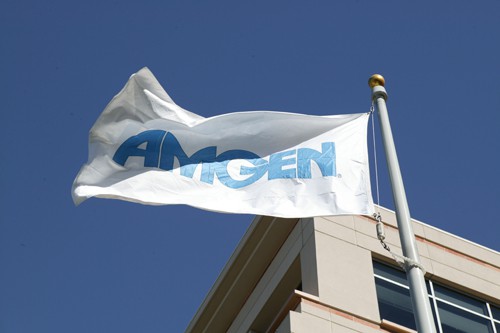
A phase III study of Amgen and UCB’s romosozumab in men with osteoporosis has met its objectives, adding to earlier positive data in post-menopausal women.
Romosozumab – an anti-sclerostin antibody – achieved a statistically significant increase in bone mineral density (BMD) in the lumbar spine in men with osteoporosis compared with placebo at 12 months in the 245-patient BRIDGE study.
All secondary endpoints were also met, including significant increases in BMD compared to placebo at the femoral neck and total hip after 12 months, as well as increases in BMD at the lumbar spine, femoral neck and total hip at month six. Patients in the trial were given a subcutaneous injection of romosozumab or placebo every month for a year.
Last month, Amgen and UCB reported similarly positive results in the FRAME trial involving post-menopausal women, prompting the firm to say they intended to file for approval of the new drug in this indication before the end of the year.
The companies say they will discuss the new data with regulators before discussing plans to file for approval of the drug in men.
Osteoporosis poses a significant threat to millions of men, though the disease is often viewed as a disease that predominantly affects women and male patients tend to be less likely to receive treatment.
Men suffer osteoporotic fractures about 10 years later in life than women, but extending lifespans for men in the developed world means that more men are becoming at risk of fractures and – when these do occur – the consequences tend to be more severe.
Iris Loew-Friedrich, UCB’s chief medical officer, said: “One in three women and one in five men over the age of 50 will experience an osteoporosis-related fracture in their lives.
“These positive results from BRIDGE add to our growing body of phase III data demonstrating romosozumab’s potential to build bone strength and to decrease fracture risk and thus help fill an unmet need for patients with osteoporosis.”
Amgen and UCB’s drug – which is also being developed by Astellas in Japan – is well ahead of the pack of anti-sclerostin antibodies coming through the pipeline for osteoporosis, with Eli Lilly’s blosozumab running at least well behind in phase I trials.
Near-term competition to romosozumab could come from Radius Health’s new parathyroid hormone (PTH) based candidate abaloparatide – dosed by injection daily – and Merck & Co’s once-weekly cathepsin K inhibitor odanacatib.
However, a major shake-up in the osteoporosis market is expected to occur as generic competition to Lilly’s big-selling PTH drug Forteo (teriparatide) starts to gather momentum. Forteo is widely used in osteoporosis therapy and brought in sales of around $1.35bn last year.
Amgen and UCB previously reported data showing romosozumab was superior to Forteo, which also requires daily dosing by injection.




